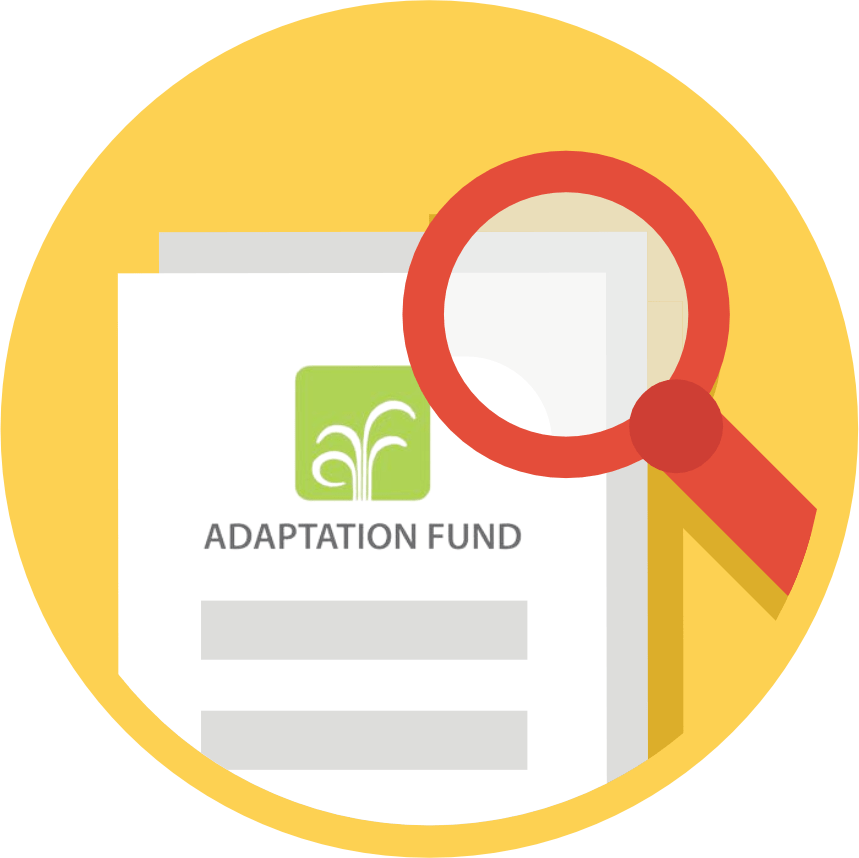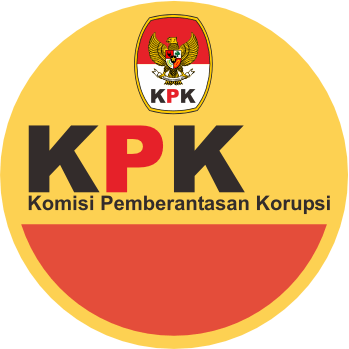SAFEGUARDING POLICY
Safeguards are one of the key issues in the implementation of development programs and activities. Safeguards are often defined as a set of policies and procedures to protect those potentially affected by a project development of the potential losses that occurred. In recent years, safeguards do not only serve as a protection policy but also an integral part of the planning that determines the final outcome of a program or activity. Consistent safeguards implementation is expected to provide a sustainable positive effect for the future mission of the activity or project. In this respect, safeguards are an integral part of the chain of events.
The Partnership (“KEMITRAAN”) has a direct interest in the use of safeguards. At least there are two reasons which form the basis for The Partnership to use safeguards. First, programs and activities related to The Partnership policy interventions that have implications on the interests of other parties. Safeguards are expected to become an instrument to ensure the policy intervention programs do not cause any harm and adverse effects both socially and environmentally. Second, The Partnership has a community empowerment program. These programs often come into contact with social issues that are complex and layered. Therefore, The Partnership needs to develop guidelines to prevent these programs having negative impacts for the community.
The following Safeguards policy is an initial instrument directed towards The Partnership’s programs and activities. In the future, it is likely that safeguards policies will evolve based on the needs of the institution, program implementation experiences, and activities. In the effort of strengthening its staff and partners in implementing safeguards effectively, The Partnership plans to provide training for its employees and assist the implementing partners who receive funding from the organization so that partners can execute this policy as required. The safeguard is especially designed to equip the program implementation with adequate guidance in order to achieve the best result out of the inputs provided and to prevent any potential negative impact on the environment and social caused by the project. This safeguard is an integral part of the financial safeguarding such as zero tolerance on fraud and corruption and anti-money laundering which have been governed under the Manual of Policies and Procedures (MPP), Standard Operating Procedures (SOP), personnel rules and regulations, and Internal Control Framework (ICF) of The Partnership.
The Partnership is committed to developing the organization’s policy and standard operating procedures (SOP) as well as preparing the capacity to implement safeguard policy in programs and activities, both for those that are executed by The Partnership and by its partners. It is also realized that policy, standard operating procedures (SOP), guidelines, and instruction may need to be updated and adjusted from time to time.
In developing the capacity of the organization to implement safeguards, The Partnership will strengthen employees’ capacity to conduct assessment, monitoring and evaluation through training both in-house or those that are conducted by others. The Partnership will also provide training or build the capacity of its partners to implement the safeguards.
In the event that the capacity is short, The Partnership may hire a project-based consultant. The employees/consultants will oversee the safeguarding policy implemented throughout the project’s life cycle, from project design and appraisal to the project implementation and closure.
Definition and scope
The scope of participation substantively must be inclusive and effective. More attention must be given when running programs dealing with indigenous peoples, local communities, marginalized groups of communities or conserved areas. Each process, mechanism or instrument designed to achieve substantive participation must be designed from the beginning of the project. Substantive participation is the right of relevant individuals with regard to policies programs and activities that are promoted by The Partnership. Therefore, instruments or mechanisms developed to achieve this is an effort to fulfil rights of the substantive participation and protection.
Instruments used
Processes and mechanisms to ensure full and effective participation include at least several mechanisms:
1. Identification and thorough mapping of all parties associated with the implementation program or activities at the project site. Such a mapping among others shows capacity related to issues promoted by the programs and activities, as well as activities, interests and bargaining power of each party
2. Mechanisms as well as guidelines for stakeholder’s participation includes a special mechanism that guarantees full and effective participation of women in various stages of implementation of the program
3. Policies and affirmative mechanisms that support vulnerable groups (the poor, disabled, disabled, and women who do not have access) to be actively involved in programs and activities. These mechanisms may include priority capacity building, consultation or a special discussion with vulnerable groups and other measures as necessary to improve the bargaining position of vulnerable groups in the implementation of activities, particularly those related to the development of public policy
4. The evaluation mechanism of program implementation and activities processes which allow improvement over participation based on inputs received from various stakeholders.
5. The mechanisms that ensure gender balance in the composition of the various implementing programs and activities, particularly with regard to the process of promoting changes and the development of new policy.
Legal Foundation
The following legal provisions provide the foundation for the rights of the parties, especially the vulnerable groups to participate in policymaking. The Partnership and its partners should view this as a legal framework as a minimum prerequisite that must be adhered to. In addition to these prerequisites, the above instruments shall become the main reference in the implementation of activities.
| Regulation | Content |
| Law No. 39/1999 about Human Rights | This law expressly states that participation a community rights. For example: (a) to file an objection to the authorities against inappropriate development in accordance with the spatial plan in its territory. This is also a part of public participation in the supervision of spatial planning; (b) to file a claim cancellation of licenses and termination of development that does not comply with the spatial plan to the authorities; and (c)to file a claim for damages to the government and / or permit holder if development activities are not in accordance with the spatial plan lead to a loss (article 55 paragraph [4] and [5], chapter 60). In addition, the role of society in spatial planning by the government conducted, among others, through: (1) participation in the preparation of spatial plans; (2) participation in the utilization of space; and (3) participation in controlling the use of space (pasal65). The law also requires the enactment of government regulation to further regulate mechanism and involvement of public participation in spatial planning (Article 65). Nevertheless, the arrangements regarding the duty of every individual and the government, this law does not regulate the duty of the government and relevant parties to adhere to processes that involve and respect the right of people to participate |
| Law No. 26/2007 on Spatial Planning | This law expressly states that participation is a community right. For example: (a) to file an objection to the authorities against inappropriate development in accordance with the spatial plan in its territory. This is also a part of public participation in the supervision of spatial planning; (b) to file a claim cancellation of licenses and termination of development that does not comply with the spatial plan to the authorities; and (c)to file a claim for damages to the government and/or permit holder if development activities are not in accordance with the spatial plan lead to a loss (article 55 paragraph [4] and [5], chapter 60). In addition, the role of society in spatial planning by the government is conducted, among others, through (1) participation in the preparation of spatial plans; (2) participation in the utilization of space; and (3) participation in controlling the use of space (pasal65). The law also requires the enactment of government regulation to further regulate the mechanism and involvement of public participation in spatial planning (Article 65). Nevertheless, the arrangements regarding the duty of every individual and the government, this law does not regulate the duty of the government and relevant parties to adhere to processes that involve and respect the right of people to participate |
Some legal provisions related to participation are also available in the Public Service Law, the Law on Environmental Protection and Management and other provisions. Most of these laws mention participation as a right. The central and local government (provincial, district /city), as well as various relevant parties, has a duty to respect, protect and fulfil these rights.
Most legislation called for participation in relation to the issues set out further elaboration in government regulation and other regulations. Such operational provision can be developed further by policymakers to enable an effective public participation environment on rules making, institutional arrangement and administrative measure
Minimum achievement List
1. In the effort to encourage reform policies and community empowerment activities, the minimum achievement of safeguard implementation are:
2. Community assisted involves providing input on policy development as well as the design of development programs
3. Vulnerable groups show participation in at least 30% of the activities of the policy reform and empowerment program. Evidence can be shown in the Technical Instructions of participation in projects/activities that include absenteeism, methods and agreed outputs.
4. The substance of the proposed changes such as the draft of policy or other forms of changes shows evidence of public input, including community, including vulnerable groups
Definition and scope
A process that guarantees that gender equity and equality-related aspects are mainstreamed, recognized and respected, including opening wider opportunities for women to express their needs and interests in a way that is safe and comfortable for women. The scope may vary from one place to another, depending on the context, culture and geography.
Instruments used
1. Identify gender-based needs and interests, particularly women’s groups, especially those who are potentially directly affected by the project activity.
2. Using a working device that is gender friendly, such as the selection of meeting location and time.
3. Ensure the project activity does not eliminate the source of livelihood for women as well as endangering their lives. Included in this category are changes in lifestyle, reduction in environmental functions, and increasing violence against women associated with the project. If unavoidable, it must be ensured that the appropriate consent of women whose lives are affected is sought, followed by the restoration of disrupted livelihoods.
4. Provide full and complete information on policies, projects and programs, with a language that is understood by both men and women, in appropriate forms and culture.
Legal Foundation
| Regulation | Content |
| Law No. 7/1984 on CEDAW ratification (Convention on the Elimination of All Forms of Discrimination Against Women), ratification | These laws exist to ensure the Elimination of All Forms of Discrimination against Women which was approved by the General Assembly of the United Nations on 18 December 1979. The Convention recognizes the differences between men and women, as well as the importance of affirmative action, and defines forms of discrimination against women. |
| Presidential Instruction No. 9/2011 | This Presidential Instruction gives orders to mainstream gender in the implementation of the planning, preparation, implementation, monitoring and evaluation of national development policies and programs, to ensure they have gender perspective in accordance with roles and functions, as well as their related authority. |
| Law No. 39/1999 | This law ensures that every individual, including vulnerable groups are entitled to fair treatment and protection with regard to specificity (Article 3) |
Other regulations related to women’s rights are also found in various fields, such as education, participation, and information.
Minimum achievement List
1. There is assurance that the project is executed and does not violate the rights of women which is reflected in the planning and implementation of the program (in the contract between the implementing program with The Partnership, as well as an agreement between the community and the program implementors).
2. The existence of models, and involvement of women, in the program area that is friendly to gender-sensitive.
3. The existence of an integrated risk analysis to the design and implementation of projects that respond to needs based on gender.
4. The existence of disaggregated data on the specific needs of affected community members (women as heads of families, and children and women in households headed by males).
5. The existence of disaggregated data on the impact of the program/project on men and women.
Definition and scope
Transparency in this context has a two-sided definition. First of all, it shows an attitude of institutions and individuals (The Partnership and grant recipients) are obliged to design and execute programs and activities in a clear, predictable (have certainty) and understood. These terms provide greater opportunities for stakeholders to understand the details of the programs and activities that affect them. The next aspect is the quality of information on plans and implementation highlighted by institutions or individuals who have the obligation to be understood so as to make the parties take a certain attitude.
Transparency requires the disclosure of information and good quality. The main indicators of the quality are demonstrated by the attitude shown by the interested parties, which may consist of inputs, comments, criticism, and even refusal of the activities proposed by the implementors.
Instrument Used
Mechanisms to ensure the implementation of transparency, at least availability of the following:
1. Mechanisms that ensure that the basic information of relevant programs and activities is presented to stakeholders at the site level.
2. The mechanisms that ensure the delivery of relevant information submitted prior to the program or project designed at the site level, in accordance with local conditions, and in a manner that is simple and easy to understand.
3. Mechanisms for clarification and reservation of information conveyed by program/activity implementer.
4. The mechanism which ensures that information which sensitive to the needs of marginalized groups, especially women and indigenous peoples
5. The mechanisms that ensure the transparency of information on the program or activity reports that is accessible and easy to understand by stakeholders, particularly women, indigenous peoples, and minorities.
6. Mechanism that ensures input or objections to the information that was made available to the public.
Legal Foundation
Some provisions of the law have regulated the transparency of public institutions or public service providers. The law defines public service providers as an institution of state officials, corporations, independent agencies established by law for public service activities, and other legal entities formed solely for public service activities (Article 1 paragraph 2 of Law No. 25/2009 on Public Service)
| Regulation | Content |
| Law No. 14/2008 Public Disclosure | Under this law, information is the right of every person. Specifically, this law states that: (1) Everyone has the right to communicate and obtain information needed to develop individual and social environment. (2) Everyone has the right to seek, obtain, possess, store, process and convey information by using all available means. On the other hand, the government has the obligation and responsibility of the right to information with respect, protect, uphold and promote human rights stipulated in this law, other legislation and international law on human rights received by state Republic of Indonesia. Obligations and responsibilities of the government, including the implementation of effective measures in the field of legal, political, economic, social, cultural, defence, state security, and other areas (chapters 71 & 72) |
| Law No. 39/1999 on Human Rights | Under this law, information is the right of every person. Specifically, this law states that: (1) Everyone has the right to communicate and obtain information needed to develop individual and social environment. (2) Everyone has the right to seek, obtain, possess, store, process and convey information by using all available means. On the other hand, the government has the obligation and responsibility of the right to information with respect, protect, uphold and promote human rights stipulated in this law, other legislation and international law on human rights received by state Republic of Indonesia. Obligations and responsibilities of the government, including the implementation of effective measures in the field of legal, political, economic, social, cultural, defense, state security, and other areas (chapters 71 & 72) |
Minimum achievement list:
- The existence of the mechanism of public disclosure of information projects and activities and input of the various parties on the design of the project or activity. This mechanism at least refers to the instruments in this policy or legislation on public information in Indonesia. Some indicators of achievements are as follows:
– Invitation to stakeholders at least 2 weeks or 10 working days before the event takes place.
– General information projects and activities are open to the public, at least, through its website. This information shall be delivered 2 weeks or 10 working days before their first face-to-face with stakeholders
– General information at least outlines the project implementers, types of activities, goals and objectives of the activities, budget, stakeholder engagement plans, stages or general work plan.
– Public input information on planned activities or projects submitted through the website. This information is also accompanied by a change in the document is based on public input.
Information safeguards policies including complaint mechanisms - Project beneficiaries understand properly the positive and negative aspects of the project and make decisions based on consideration of those two aspects
- At least 50% of the project beneficiaries know the general description of the project, among others, the name of the executor, scope and location of the project activities
The Partnership is committed to developing the organization’s policy and standard operating procedures (SOP) as well as preparing the capacity to implement safeguard policy in programs and activities, both for those that are executed by The Partnership and by its partners. It is also realized that policy, standard operating procedures (SOP), guidelines, and instruction may need to be updated and adjusted from time to time.
In developing the capacity of the organization to implement safeguards, The Partnership will strengthen employees’ capacity to conduct assessment, monitoring and evaluation through training both in-house or those that are conducted by others. The Partnership will also provide training or build the capacity of its partners to implement the safeguards.
In the event that the capacity is short, The Partnership may hire a project-based consultant. The employees/consultants will oversee the safeguarding policy implemented throughout the project’s life cycle, from project design and appraisal to the project implementation and closure.
The Partnership is committed to developing the organization’s policy and standard operating procedures (SOP) as well as preparing the capacity to implement safeguard policy in programs and activities, both for those that are executed by The Partnership and by its partners. It is also realized that policy, standard operating procedures (SOP), guidelines, and instruction may need to be updated and adjusted from time to time.
In developing the capacity of the organization to implement safeguards, The Partnership will strengthen employees’ capacity to conduct assessment, monitoring and evaluation through training both in-house or those that are conducted by others. The Partnership will also provide training or build the capacity of its partners to implement the safeguards.
In the event that the capacity is short, The Partnership may hire a project-based consultant. The employees/consultants will oversee the safeguarding policy implemented throughout the project’s life cycle, from project design and appraisal to the project implementation and closure.





